The Japanese maple is a versatile plant and comes in different colors, textures, sizes, and shapes. If you want to make the environment of the landscape more elegant then you should grow Japanese maple plants.
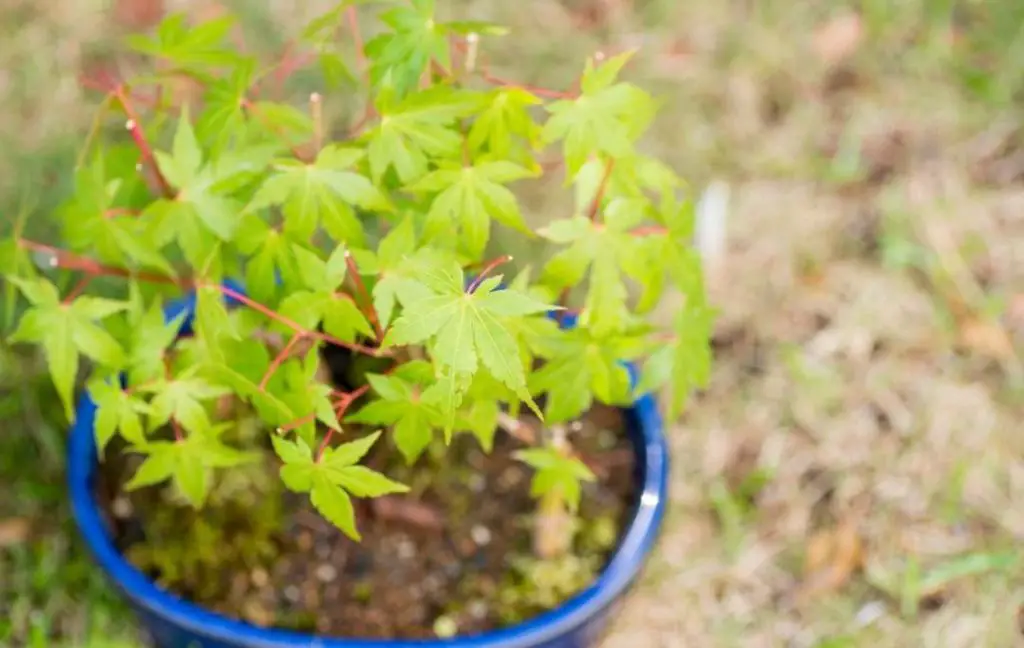
You can make this plant part of your home and grow it anywhere if you choose container gardening. It easily grows on a courtyard, porch, patio deck, balcony, or rooftop if you grow them in containers.
The perfect soil has grass clippings, leaves, peat moss, organic compost, bark mulch fines, and sand.
Why Grow Japanese Maples In Containers?
Maple trees are very deciduous, slender, and graceful. Most people have limited space so they can’t start their garden but they are interested in growing plants.
Plants bring us close to nature and there are many advantages to spending time with plants. Container gardening is the best solution for those who have a limited area or a small garden.
They can’t grow many plants but they can choose beautiful vertical pots and containers for this purpose.
If you don’t have any growing area for growing plants then your patio and courtyards are the perfect places for your containers. Most of the people in urban areas prefer to live in apartments.
Indoor gardening can satisfy their need for green. Their balcony or patio or deck or rooftop becomes the best place in your house after the addition of plants.
Japanese maples are plants that can easily grow in containers and can be placed anywhere in your house. Those who don’t have a garden can create a beautiful garden view on their balcony or patio.
Flexibility is an important advantage of container gardening. For example, if you want to change the design of your garden to satisfy your creativity and aesthetic sense then you can easily do it if you grow plants in containers.
The containers are easily movable and portable. That’s why you can change their place from time to time to change the setting of your garden. In winter, plants can’t survive in the cold.
In those days, you could bring your plants inside if you grew them in containers or pots. Your plants can easily be protected from the harsh weather of winter and summer because you can move them which is not possible when you grow plants in the ground of your garden.
Best Container For Growing Japanese Maples
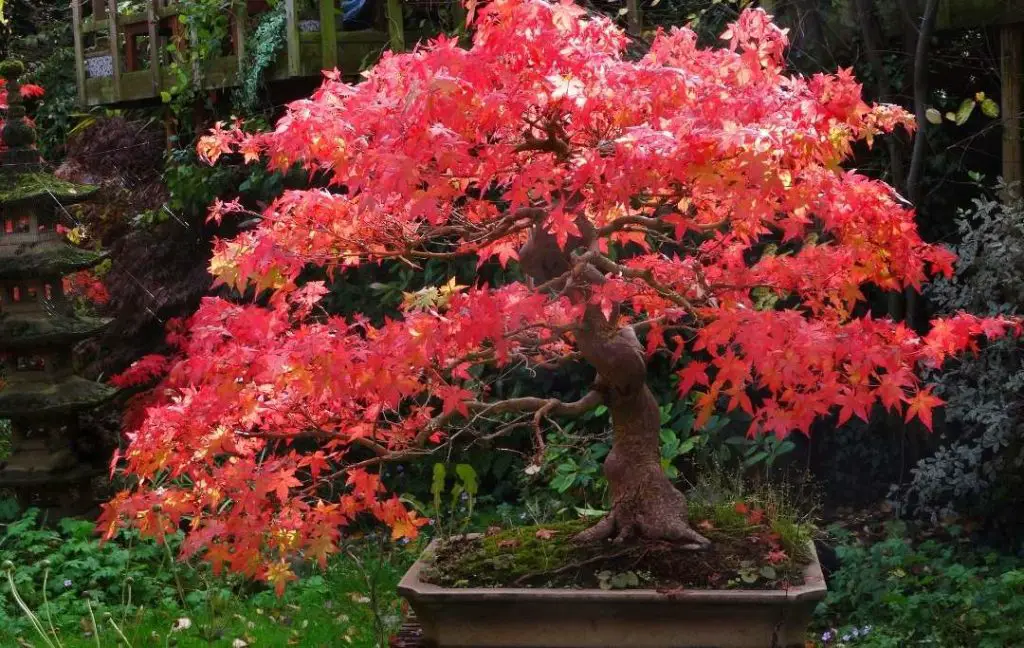
There are different types of containers and parts available in the local nursery and any gardening store. Pots and containers are made from plastic, ceramic, terracotta, clay, and even metal.
It is recommended that you should use ceramic containers because they are very lightweight and easily movable. It doesn’t matter what type of container you are using, make sure it has drainage holes at the bottom.
It is very important to prevent your plants from root rot and fungal diseases. If you talk about Japanese maple trees, they don’t like water logging. It means drainage holes are very essential to keep your plant healthy.
If your pot or container doesn’t have drainage holes then you can make them with the help of the drill. The size of the holes should be good enough otherwise they would get blocked with bits of potting soil.
Your container must be 6 inches wide so the roots of Japanese maple are easily established in it. The width of the container plays a very important role because when Japanese maple grows you have to transplant it into a larger container. The transplanting will become very easy in a wider pot or container.
Why Healthy Soil Is So Important For Japanese Maple?
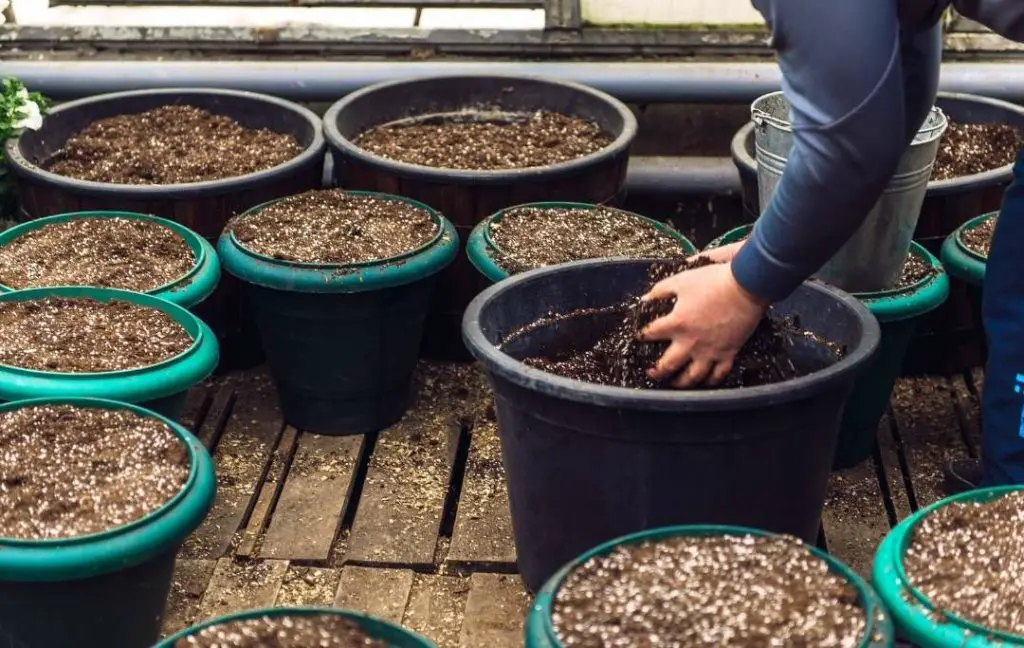
Healthy soil is very important because it can receive and store more nutrients and water. It means, in dry periods, this stored water will be helpful for your plants.
Healthy soil has the quality to decompose dead matter and minerals for your plants due to the presence of micro and macro-organisms.
Microorganisms provide nitrogen to the plants and detoxify harmful chemicals. Another important quality of the soil is that it can filter the water naturally through a physical, chemical, and biological process.
If you want to grow a healthy Japanese maple then you need healthy soil. Make sure the soil you are using must be well-drained to prevent your plants from root rot.
You should not use garden soil for filling your containers because it may be compacted and the roots will not get established. In this article, we are going to discuss with you what type of soil you can use for growing Japanese maple in containers.
When you grow plants in containers then the main advantage you get is maintaining the fertility of the soil which is not possible when you grow plants in the ground.
You can use a high-quality potting mix that contains all the basic nutrients that are essential for thriving your plants. You can make your soil richer for your plants when you add the required materials.
The Best Soil You Can Use For Filling Your Container For Growing Japanese Maple
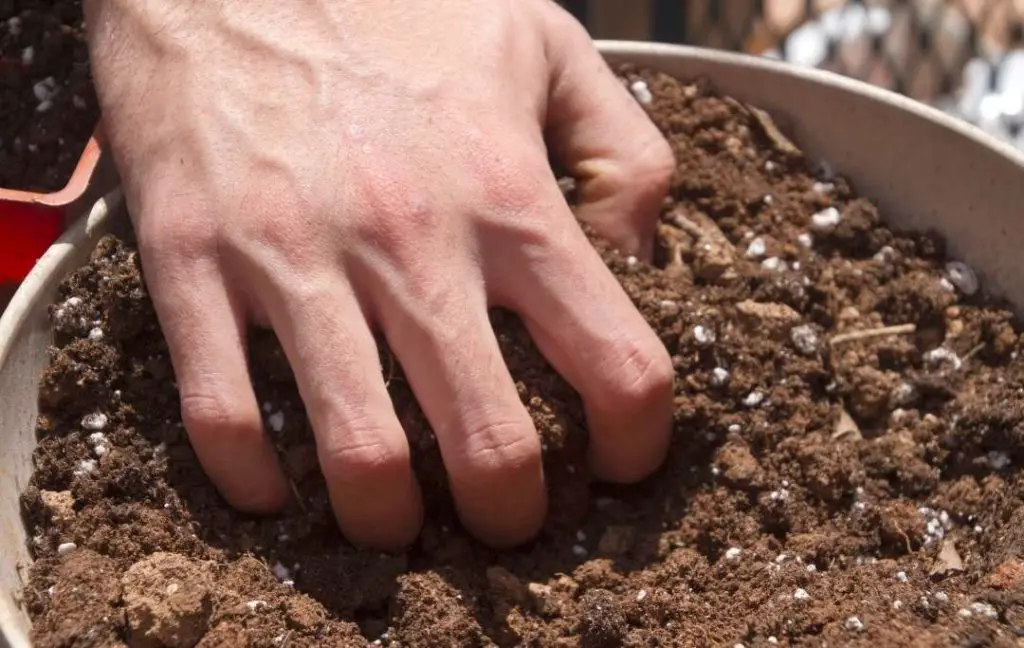
If you want to grow a plant that has beautiful foliage colors then you must choose a Japanese maple. Soil mix is an important factor in the growth of any plant.
To fill your container, you must use the best soil to get healthier Japanese maple. If you use a bark-based mix then your Japanese maples flourish very well. They don’t like wet feet. That’s why you should choose such a type of soil mix that dries out after thoroughly watering for two or three days.
The perfect soil has grass clippings, leaves, peat moss, organic compost, bark mulch fines, and sand. If you add all these materials then your soil will become more productive and fruitful. Fertile and rich soil with regular watering is the perfect combination to make your Japanese maple incredibly healthy.
The soil contains calcium and phosphorus to establish a strong root system for your plants. This type of potting mix is well-drained soil so your plant will be saved from water logging.
The structure of potting soil mix becomes very productive due to the presence of worm casting. This will help to improve the capability of the soil to hold more water. The immunity of Japanese maple enhances if the potting mix has potassium.
As you know Japanese maple is heavy so they need the best soil to hold the weight of the plant. If the roots are strong they can easily absorb moisture from the soil. Productive and fruitful soil has more water absorption capacity.
To improve the quality of the soil you can fertilize it regularly. Slow-release shrub and tree fertilizer are best for this purpose. You should not use 10-10-10 and quick-release fertilizer because they can burn the roots of Japanese maple.
You will get all the instructions and information on the package about recommended dosage. You must use the suggested quantity of fertilizer for the Japanese maple.
Following are some tips that will help you in the choosing Ideal soil for growing Japanese maples in containers
- Make sure you are using nutrient-rich soil mix rather than garden soil.
- You can ask your local nursery about the best soil mix for the Japanese maple.
- When you use a high-quality potting mix then your plants will get better aeration and water absorption.
- The strong roots system is developed when you provide the best soil mix.
- The other advantage of Ideal soil is that your plant can survive in cold weather.
- You must use such a type of soil that has a large amount of sand to improve the drainage quality. This will help to improve the health and growth of your member tree.
- Always try to use such a type of soil mix which is specially designed for the Japanese maple. Besides sand, your best soil mix must contain a higher percentage of peat moss.
What Is The Function Of The Soil For The Japanese Maple Trees?
The growth of each part of a Japanese maple depends upon the richness of the soil. Leaves, flowers, stems, and roots all thrive well when they get essential nutrients from the soil. It is not easy to understand the ideal soil for Japanese maple trees.
If you use the right soil then you will get beautiful Japanese maple trees in your containers. Wrong soil will waste your time and money and you will not get the desired results.
Before planting your plants you have to do some research about the needs and requirements of your favorite plants.
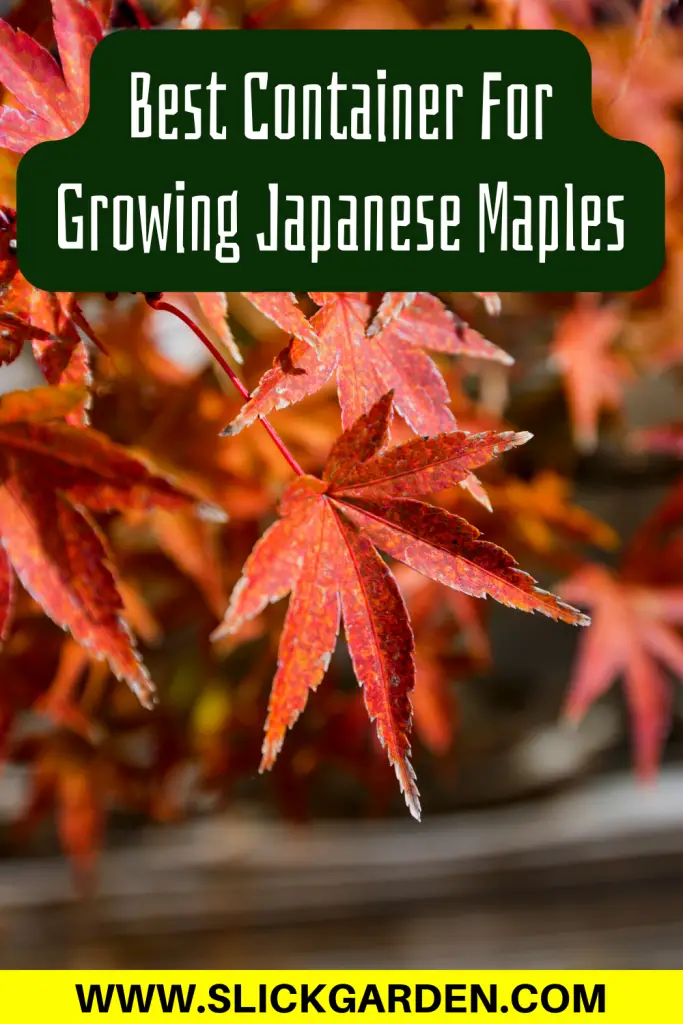
How Often To Water Japanese Maple In A Container?
The need for water for every plant is different. The water requirement of plants varies with weather and conditions. It means the frequency of water depends upon the climate of your area.
The best way to check the watering needs of your plant is with your finger. You can easily touch the surface of the soil with the help of your finger. If it feels dry, it means your plants need water. For moist soil, you have to wait for watering.
WATERING IN WINTER
On cold days, most of the plants need less water. Because in summer, heat makes the soil dry very quickly. You have to watch the weather conditions of your area and water your Japanese maple.
If your plant will not get water on time then the roots will often freeze-dry even in cold temperatures. If you place your container in a shady area then you have to water Japanese maple at least 2 to 3 times a month.
You have to wait to drain the water from the soil when the soil is dry then you can water it again. Over watering can result in soggy roots. This will also cause fungal infections and many diseases. This will finally become the reason for the death of your plant.
WATERING IN CONTAINERS
We have discussed many advantages of container gardening but there are some disadvantages also. The one big disadvantage is that the soil in the container dries out more quickly than in the ground.
When you grow plants in the ground they establish their roots easily. In container gardening, you have to maintain all the requirements of your plants to keep them healthy.
If your plants do not water on time they will be dead soon. you have to maintain the frequency of water according to the climate in which you are living.
If you are growing a smaller variety of Japanese maple then you should water it occasionally. Overwatering is not good for your plants if you see the leaves of the plants are changing color it is a predominant sign of overwatering.
If the leaves of the maple plant are turning yellow then this is an alarming situation for you. Root rot can destroy your plant and you should carefully maintain your watering schedule.
For better drainage, you need holes in the container. You can also apply a layer of gravel for good drainage. To fulfill the needs of the water of Japanese maple, you can place a tray underneath the container to maintain the humidity and moisture level.
But these trays can cause a lot of issues like phytophthora and pseudomonas. Leaf scald is a problem that can destroy your plant to avoid this you should not splash water on the foliage.
Another important thing is that you should water your plant in the morning, not during the hotter parts of the day when the sun is shining brightly. It is better to water your plants on time and prevent them from drying out. Too much and too little water both are not good for the Japanese maple.
